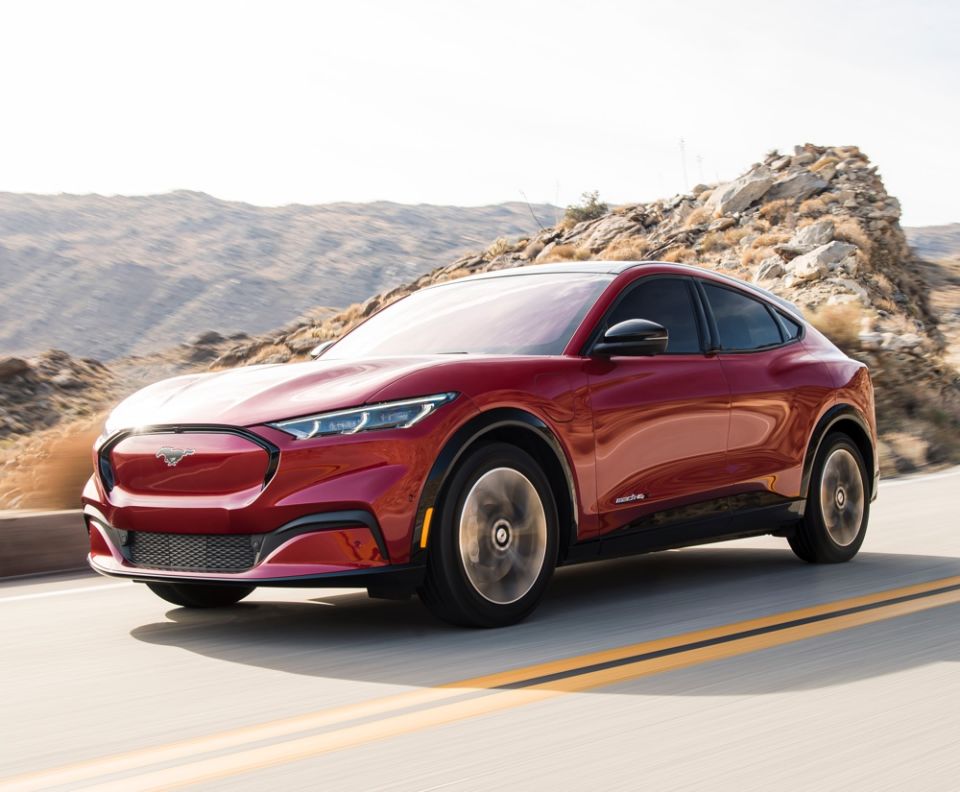Read The Full Article On: Money
For Ford (F), 2021 looks like the year that electric vehicle (EV) sales will truly begin to take off. The auto maker, which is set to launch its highly anticipated Mustang Mach E electric crossover, says the year will be pivotal in terms of EV sales in the U.S.
“We’ve already seen some signals that indicate that we’re going to start to see a real acceleration of consumer adoption and pull for electric vehicles,” Ford CTO Ken Washington told Yahoo Finance during the all-virtual CES 2021.
According to a November report by Frost & Sullivan, U.S. EV sales were forecast to top out at 1.6 million vehicles in 2020, before reaching 7 million vehicles sold by 2025.
“I think what we’re going to see is the cost will continue to come down, and as governments make changes to policies…I think that’ll lead to an acceleration of the adoption that’s already happening in Europe, where we’re seeing as many as one in 10 vehicles be an all-electric vehicle,” Washington said. “We think the acceleration is going to really begin…this year.”
Ford’s big sell will be its upcoming Mustang Mach-E electric crossover. Designed to take on market leader Tesla’s (TSLA) Model Y, the Mach-E starts at $42,895, or $35,395 after federal tax credits, while the Model Y starts at $41,990, or $35,690 after tax credits.
The base Mach-E gets you an estimated 230 miles per charge, while the Ford’s California Route 1 model gets 305 miles on a charge. The base Model Y, meanwhile, gets 244 miles on a charge or 326 with the extended range package.
Ford will see a formidable competitor in Tesla, which became a Wall Street darling in 2020. The company’s stock skyrocketed 714% in the last 12 months from $103.70 a share on Jan. 15 2020 to $845 a share as of the close of markets on Jan. 14, 2021. Tesla’s market cap puts it as the most valuable automaker in the world, despite selling a fraction of the vehicles of its competitors.
It’s not just Tesla Ford will be competing with, though. Other manufacturers are diving deeper into the EV space as well, including BMW, Honda (HMC), Volkswagen, and Toyota (TM) — heck, there’s even an all-electric Hummer on the horizon.
Self-driving vehicles are coming in 2022
Beyond electric vehicles, Washington offered his predictions for when drivers will begin to see fully autonomous vehicles hit the road.
“We’re moving toward the 2022 timeline, which is not very different than what we originally said, because we’ve always known it was going to be difficult,” he said.
Tesla currently offers what it calls its Full Self-Driving Capability package as well as its Autopilot feature, though both are nowhere near providing the experience you’d expect with something called “Full Self-Driving Capability.” Instead, the option is an advanced driver assistance package that still requires driver supervision.
Ford’s first autonomous vehicles, Washington explained, will likely be taxi services or delivery vehicles rather than consumer cars. The rollout will also take time depending on the market, he said.
“It’s important for everyone to understand that the adoption of the scale up of this technology is going to be relatively modest, because it’s got to go market by market,” Washington said.
Self-driving cars are far from the pipe dream they once were. With every automaker pushing into the space, and building out their own self-driving vehicles, it looks as though the technology is all but a foregone conclusion.
Which company gets truly autonomous vehicles on the road first, though, will be incredibly consequential, and Ford looks to be holding steady in the race.

